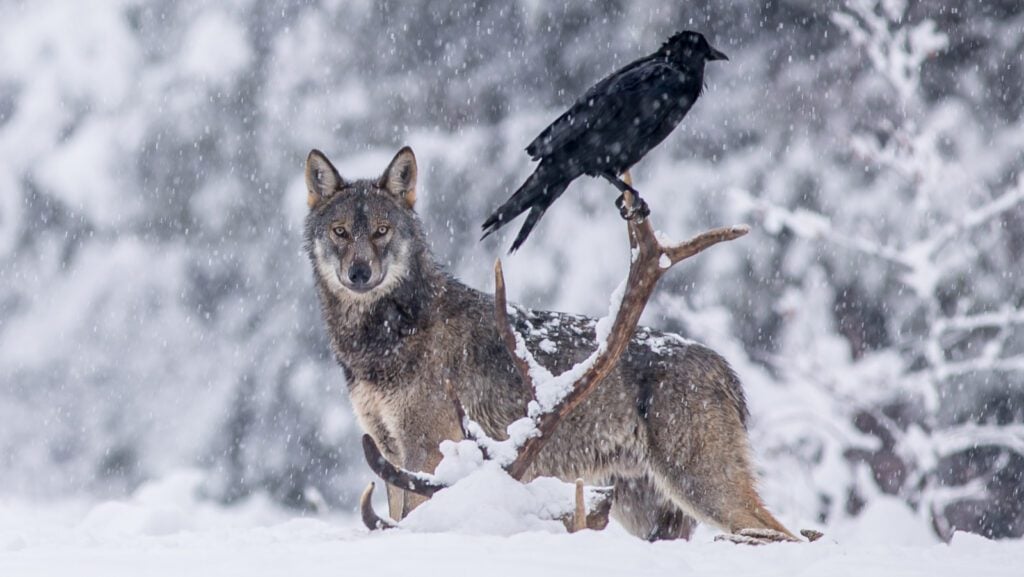Wolves, being predators and carnivores, eat almost any kind of prey in their environment, including ungulates, rabbits, smaller rodents, and even birds. But did you know wolf cubs and ravens get along so well?
Ravens and wolf cubs have been seen playing together. The ravens flew over the cubs with sticks, enticing the cubs to jump to grab the stick from them.
The Wolf Pack Behavior
Wolves typically live in packs of up to two dozen individuals, with packs of 6 to 10 being the most common. A pack is a family unit made up of an adult breeding pair, the alpha male and alpha female, and their offspring of varying ages.
The ability of wolves to form strong social bonds with one another allows wolves to form wolf packs. Within the pack, a dominance hierarchy is established, which aids in the maintenance of order. The alpha male and the Alpha female constantly assert themselves over their subordinates and direct the group’s activities.
The female dominates roles such as puppy care and defense, whereas the male dominates foraging, food provisioning, and travel associated with those activities. Both sexes are active in attacking and killing prey, but hunts are often conducted alone during the summer.
Depending on prey abundance, a pack’s territory can range from 80 to 3,000 square kilometers, and it is fiercely defended against neighboring packs. Wolves communicate through visual signaling like facial expression, body position, tail position, vocalizations, and scent marking.
Howling keeps the pack in touch and appears to strengthen social bonds among pack members. Along with howling, marking territory with urine and feces signals neighboring packs that they should not intrude. Resident packs frequently kill intruders, but in some cases, they are accepted. (Source: Britannica)
Ravens and Wolves Connection
Ravens and wolves have a special bond. Ravens, also known as wolf birds by different cultures, have close ties to wolves. The common raven or Corvus corax, like many scavengers, is mainly linked to large predators that serve as potential food providers. Wolves provide many Yellowstone species with a year-round food source that was not always available before their reintroduction into the park: carrion. This food source also benefits bears, eagles, magpies, and several other species.
Ravens eat carrion quickly, usually arriving not long after a kill but, due to their close association with wolves, being present when the kill is made. One carcass had as many as 135 ravens on it! Surprisingly, these birds will consume not only some of the food but also store as much as possible. It is thought that in some cases, the raven, rather than the wolf, will consume most of a large animal carcass.
Ravens are admired for their social abilities, complex communication system, and excellent visual recognition. When they find a dead animal, these vocal birds make a lot of noise, drawing attention to the carcass so that larger, more tooled scavengers can open up the hide and eventually provide food for the ravens.
Ravens have been observed interacting with wolves, particularly pups and yearlings. These fascinating birds have been observed grabbing sticks and playing tug-of-war with wolf puppies, flying over young wolves with sticks, teasing the small canines into jumping up to grab the sticks, and even boldly pulling wolves’ tails to provoke a reaction.
According to some scientists, individual ravens may form special bonds with individual wolves within a pack. (Source: Yellow Stone)
